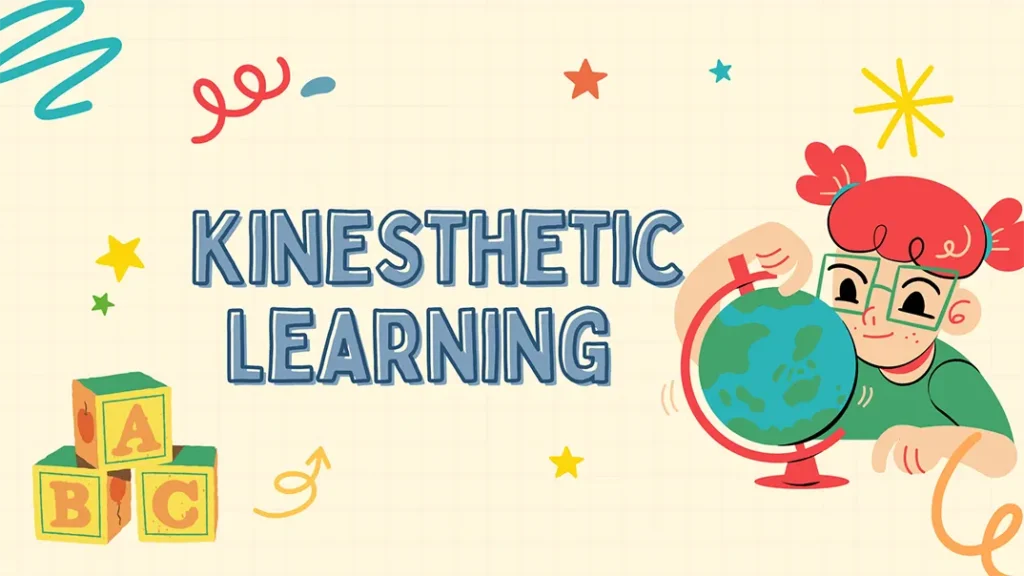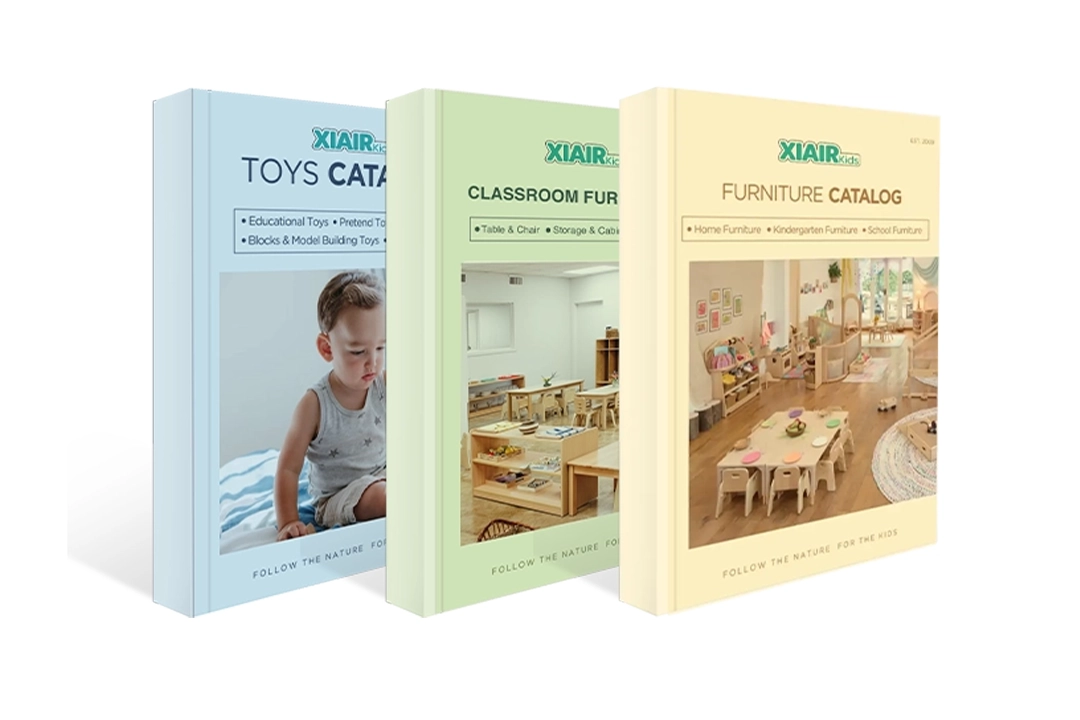Studies suggest that nearly 30% of students are primarily kinesthetic learners, meaning they understand and remember best when they can move, manipulate, or physically engage with their learning environment.
Kinesthetic learning is a powerful and often underappreciated learning style that emphasizes movement, physical interaction, and sensory engagement. Children who benefit from kinesthetic learning need opportunities to explore ideas through hands-on experiences rather than verbal instructions or visual cues.
This article will define kinesthetic learning in early childhood, highlight its essential characteristics, and explain how to recognize and support young kinesthetic learners.
What Is Kinesthetic Learning?
Kinesthetic learning is a style of learning in which knowledge is acquired through physical movement, tactile experiences, and direct interaction with the environment. It emphasizes the connection between body and mind during the learning process, allowing individuals to process information by actively engaging in tasks rather than observing or listening passively.
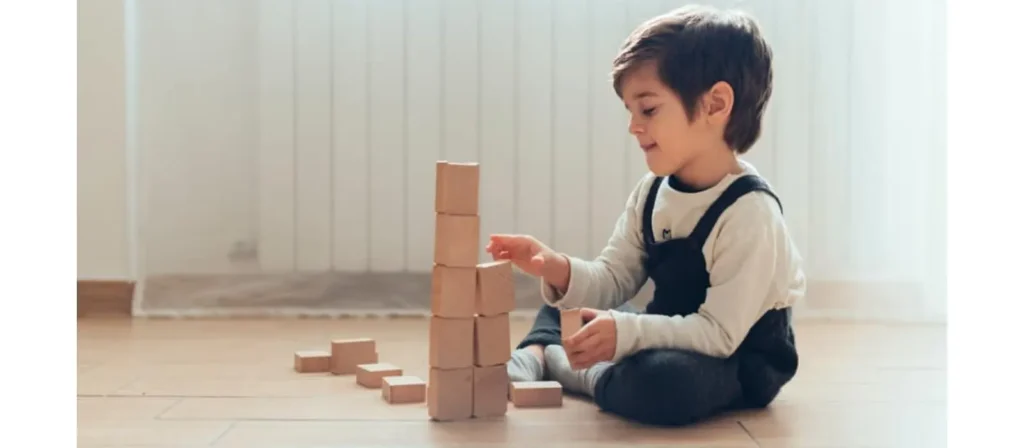
In early childhood, kinesthetic learning plays a foundational role in cognitive and physical development. Young children are naturally inclined to explore through touch, motion, and manipulation of objects. This sensory-driven approach helps form neural connections and supports the development of memory, problem-solving skills, and spatial awareness.
Unlike visual or auditory learning styles, kinesthetic learning is grounded in action. Concepts are internalized through trial, repetition, and sensory feedback. For example, a child might better understand the concept of balance by walking across a beam than by looking at a diagram. This learning style is particularly effective in the early years, when children’s brains are highly responsive to physical engagement and multisensory input.
Examples of Kinesthetic Learning
Kinesthetic learning often comes to life in 幼児教室 where movement, sensory exploration, and physical tasks are part of daily routines. This learning style is not confined to physical education or 屋外遊び. It is deeply embedded in activities across all subject areas, allowing children to learn by doing rather than by watching or listening alone.
1. Literacy Activities
In kinesthetic learning, reading and writing skills can be supported through movement-based tasks. Physical engagement helps young children connect letters, sounds, and words to real actions. These sensory-rich experiences improve memory and motor coordination while making language learning more interactive and enjoyable.
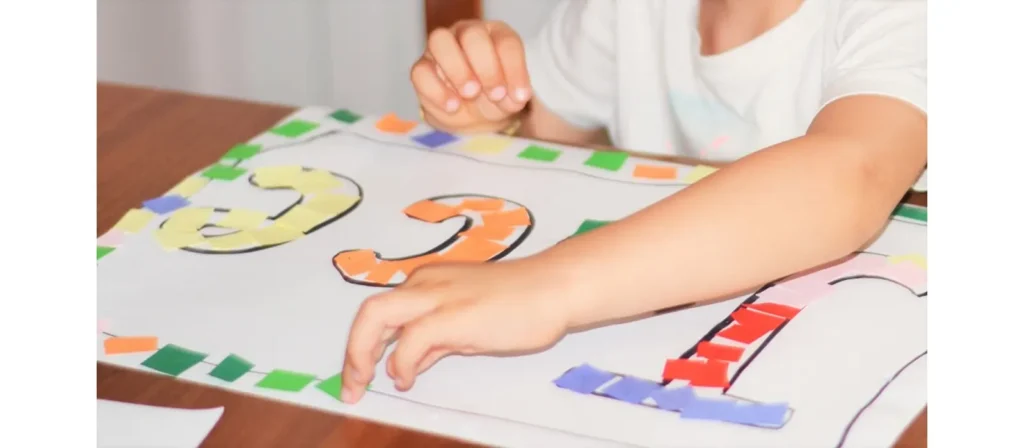
例:
- Tracing letters in sand, clay, or on textured surfaces
- Forming letters with the body or using large foam shapes
- Jumping from one letter mat to another to spell words
- Acting out verbs or story events to build comprehension
2. Science and Exploration
Kinesthetic learning is especially powerful in scientific discovery. Children develop a deeper understanding of cause and effect, observation, and categorization when they physically interact with natural materials. These experiences stimulate curiosity and support inquiry-based learning.
例:
- Digging and planting seeds in a classroom garden
- Mixing baking soda and vinegar to observe chemical reactions
- Using the body to demonstrate the water cycle or animal movements
- Classifying rocks, leaves, or shells through touch and sorting
3. Math Activities
Math concepts can be abstract for young children, but kinesthetic learning transforms numbers into something they can touch, move, and manipulate. Hands-on 数学のアクティビティ not only reinforce counting and measurement but also support spatial awareness and sequencing.
例:
- Hopping in place to count aloud
- Sorting and grouping physical objects by size or color
- Building patterns with beads or blocks
- Using a measuring tape to compare the lengths of classroom items

4. Social and Emotional Learning
Physical activity can also support 社会の発展 and emotional awareness. Through movement, children learn cooperation, empathy, and self-regulation. These skills are critical for group learning and classroom harmony.
例:
- Participating in partner yoga or guided movement games
- Using hand signals or gestures to express emotions
- Acting out social scenarios through role-play
- Practicing calm-down techniques like squeezing stress balls or breathing with movement
5. Daily Routines and Transitions
Even everyday classroom routines offer opportunities for kinesthetic learning. When teachers embed physical activity into transitions or responsibilities, children become more focused and engaged while developing independence.
例:
- Using a movement-based song to clean up or line up
- Carrying items to designated shelves to build responsibility
- Following multi-step movement instructions during circle time
- Assigning tactile jobs like feeding class pets or watering plants
夢見るだけでなく、デザインしましょう!カスタム家具のニーズについて、ぜひご相談ください!
Benefits Of Kinesthetic Learning
Kinesthetic learning offers a wide range of developmental advantages in early childhood. Since young children naturally explore the world through movement and physical interaction, this learning style aligns with their developmental needs and promotes whole-child growth. From enhancing memory and coordination to improving emotional and social connections, kinesthetic learning lays the groundwork for long-term academic and personal success.
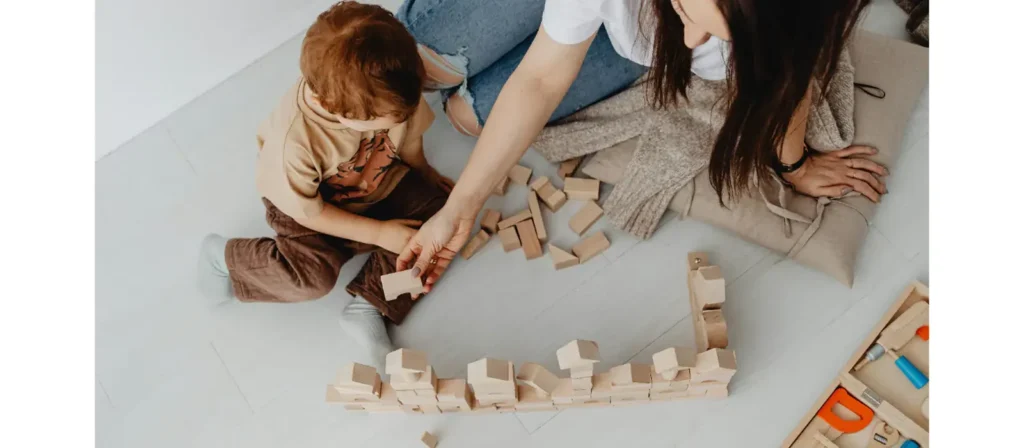
Improved Cognitive Development
Physical movement stimulates brain activity by increasing blood flow and oxygen levels, which enhances alertness and mental performance. When children combine thinking with action, they form stronger neural connections, especially in areas related to attention, reasoning, and executive function. Simple activities such as manipulating blocks, navigating obstacle courses, or using gestures to represent ideas all support deeper cognitive engagement.
Increased Information Retention
Children often retain information more effectively when it is tied to a physical experience. Kinesthetic learning helps move knowledge from short-term to long-term memory by engaging the senses and muscles during the learning process. For example, a child who learns the life cycle of a butterfly by acting it out is more likely to remember it than one who only views a diagram. The more active the body, the more active the brain becomes in processing and storing information.
Development of Fine and Gross Motor Skills
Kinesthetic learning activities often involve actions like cutting, building, drawing, hopping, or stretching. These movements help children develop both fine motor skills, such as hand-eye coordination and dexterity, and 粗大運動能力 like balance and body control. These physical competencies are essential not only for academic tasks like writing or using scissors but also for overall physical development and everyday functioning.
Improved Social Skills
Although kinesthetic learning is often associated with independent tasks, it frequently involves cooperative play and teamwork. Group activities such as building projects, dancing, or dramatic role-play require communication, turn-taking, and shared problem-solving. These social interactions help children develop empathy, patience, and confidence in group settings. The physical nature of the activities also lowers barriers, making it easier for children to connect with their peers.
創造的思考
Approaching learning through physical exploration encourages children to think in new and flexible ways. Kinesthetic tasks often involve open-ended materials and unstructured scenarios, allowing children to generate ideas rather than follow a fixed pattern. Whether they are building something new, imagining a story through movement, or combining materials in unusual ways, children are encouraged to express their ideas creatively and confidently.
問題解決能力
Kinesthetic learning places children in active roles where they must explore, experiment, and adapt. Physical learning environments often involve real-time feedback, which promotes trial and error and independent thinking. When a tower falls or an idea does not work, children adjust their strategies and try again. This process helps them develop persistence, critical thinking, and a solution-oriented mindset that benefits all areas of learning.
What Is a Kinesthetic Learner?
A kinesthetic learner is a child who processes and understands information most effectively through physical activity, hands-on experiences, and movement-based exploration. These learners often rely on their bodies to help them think, solve problems, and retain knowledge. Unlike children who learn best by listening or watching, kinesthetic learners need to physically engage with materials and environments to make sense of new concepts.
Kinesthetic learners in early childhood often exhibit specific behavioral patterns in learning environments. They may have difficulty sitting still for long periods, frequently seek out opportunities to move, and often express their thoughts through actions rather than words. One common characteristic of kinesthetic learners is their strong connection between movement and memory. They tend to remember information more accurately when it is linked to physical experiences.

Characteristics of Kinesthetic Learners
Kinesthetic learners demonstrate unique behavioral and cognitive patterns that set them apart from other learning styles. These children thrive when they can use movement, hands-on exploration, and physical tasks to engage with new information. Recognizing these characteristics early can help educators and parents create more effective and supportive learning environments.
- Preference for Hands-On Activities
Kinesthetic learners show a strong inclination toward learning through direct experience. They enjoy activities like building, drawing, crafting, or manipulating objects. Tasks that involve movement or allow them to use their hands help them better understand concepts. For these children, abstract instruction without physical involvement can lead to disengagement or confusion. - High Energy and Need for Movement
These learners are usually very active and may struggle with sitting still for extended periods. Their need to move is not necessarily a sign of inattentiveness but rather a reflection of how they process information. They often learn best when lessons include physical activity such as role-play, games, or movement-based learning stations. - Strong Motor Memory
Kinesthetic learners tend to remember what they do better than what they hear or see. They benefit greatly from actions such as writing, building models, or using gestures while learning. Physical repetition reinforces their memory, which makes them excellent at activities that require motor coordination, such as sports or dance. - Sensitivity to Touch and Texture
Many kinesthetic learners have heightened tactile awareness. They may be particularly drawn to materials with interesting textures or enjoy sensory-rich environments. Activities that allow them to feel, mold, or physically manipulate objects help these learners connect more deeply with new information. - Difficulty Learning Through Passive Methods
Because of their active learning style, kinesthetic learners may struggle in environments where instruction relies heavily on lectures or written materials. Without the opportunity to move or interact, they may become restless or lose focus. They often require breaks and physical tasks to stay engaged and productive. - Excellent Physical Coordination
Kinesthetic learners often excel in tasks that require body control, timing, and coordination. Whether through sports, dance, or simply navigating their environment, they are typically aware of their body in space and comfortable using it as a tool for exploration and expression. - Expressive Through Movement
These children tend to express emotions, thoughts, and ideas through body language and physical activity. They may use gestures while speaking, act out stories, or show enthusiasm through energetic movement. This expressiveness is a key part of how they communicate and learn.
夢見るだけでなく、デザインしましょう!カスタム家具のニーズについて、ぜひご相談ください!
Learning Strategies for Kinesthetic Learners
If you are a kinesthetic learner, you learn best by moving, touching, building, and doing. Sitting still and listening to long explanations might feel challenging, but that does not mean you are not smart. It just means your body needs to be part of how you learn. Here are some strategies that can help you study, understand, and remember better in a way that fits how your brain and body work together.

1. Standing While Studying
Allowing a kinesthetic learner to stand while reading or completing a task can improve concentration. A standing desk or a raised surface enables light movement and posture changes, which support alertness and engagement during learning.
2. Combining Movement with Study
Physical activity, such as walking while reciting or jumping while spelling, helps reinforce memory. Tasks involving coordinated motion give kinesthetic learners a way to connect information to the body, making the learning more meaningful.
3. Using Small, Repetitive Motions
Even limited movements like tapping fingers, twisting a rubber band, or squeezing a soft object can help maintain focus. These subtle motions allow kinesthetic learners to self-regulate during activities that require extended attention.
4. Writing and Drawing by Hand
Writing notes, copying key words, or sketching diagrams activates muscle memory and supports deeper understanding. Using colored pens or visual organizers can enhance clarity and support both retention and recall.
5. Engaging with Tactile Materials
Touching and manipulating physical objects strengthens connections between abstract ideas and real-world understanding. Sorting flashcards, using counting blocks, or arranging puzzle pieces reinforces concepts through physical interaction.
6. Role-Play and Physical Demonstration
Acting out scenes, reenacting story sequences, or miming scientific processes allows the body to reinforce meaning. These activities help kinesthetic learners internalize lessons that might otherwise remain abstract.
7. Incorporating Movement Breaks
Short, planned movement breaks between tasks improve stamina and mental clarity. Stretching, walking, or doing light physical activity resets the body and prepares the learner to re-engage with focus.
How to Support Kinesthetic Learners?
Supporting kinesthetic learners requires an intentional approach that respects their need for movement and physical engagement. These learners often struggle in environments that demand prolonged stillness or focus on abstract instruction. By creating flexible, sensory-rich experiences, parents, educators, and caregivers can help kinesthetic children thrive both academically and emotionally.
1. Design a Movement-Friendly Environment
Learning spaces should allow room for movement and flexibility. Classrooms and homes can include floor cushions, standing desks, learning mats, or open areas for physical activities. A variety of seating options can also help children choose what makes them feel most focused and comfortable.
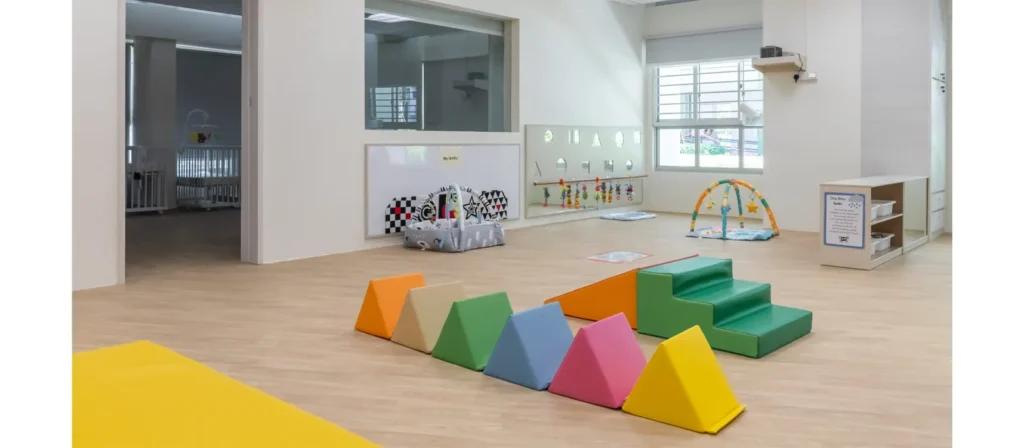
2. Incorporate Movement into Instruction
Whether teaching numbers, letters, or science concepts, using activities that involve physical movement enhances engagement. Teachers can integrate activities such as marching while reciting the alphabet, acting out historical events, or using body gestures to represent math symbols. Movement-based learning supports both understanding and memory.
3. Encourage Hands-On Exploration
Provide materials that children can touch and manipulate. Use puzzles, 知育玩具, models, and craft supplies to support lessons. Encourage children to engage their senses during learning through textures, shapes, and physical construction. Real-life activities like cooking, gardening, or assembling objects help reinforce educational concepts.
完璧な教室はワンクリックで完成します!
4. Break Lessons into Active Segments
Dividing instruction into short, action-oriented chunks helps sustain attention. Switching between sitting, moving, building, or acting out ideas prevents fatigue and keeps kinesthetic learners mentally engaged across subjects.
5. Allow Frequent Physical Breaks
Kinesthetic learners need regular breaks to move their bodies. Build short activity sessions into the day, such as dancing, stretching, or simple exercises, between lessons. These breaks improve focus, reduce restlessness, and support 感情の調整.
6. Use Real-World Learning Opportunities
Take learning outside the classroom or home whenever possible. Nature walks, visits to museums, or community exploration can turn everyday moments into powerful learning experiences. These real-world encounters allow kinesthetic learners to physically interact with their environment, deepening their understanding of abstract ideas.
7. Allow Alternative Ways to Show Understanding
Instead of only written or verbal tests, offer project-based tasks, model building, drawing, or demonstrations. These methods allow kinesthetic learners to show knowledge through action, often resulting in clearer, more confident performance.
8. Communicate with Patience and Encouragement
Because kinesthetic learners may not always fit into traditional learning molds, they need reassurance and 肯定的な強化. Recognize their strengths, celebrate their creativity, and avoid punishing them for moving or fidgeting. Supportive communication builds confidence and a love for learning.
Common Misconceptions About Kinesthetic Learners
Kinesthetic learners often go unnoticed or misunderstood in traditional learning environments. Their natural need to move and interact physically with materials may be misinterpreted as misbehavior or lack of ability. Understanding and correcting these misconceptions is essential for creating supportive spaces where all learners can thrive.

1. They Are Just Hyperactive
One of the most common misunderstandings is assuming that kinesthetic learners are simply hyper or cannot control themselves. In reality, their movement is purposeful. It helps them process information and stay engaged, not disrupt or avoid learning.
2. They Cannot Focus
Because kinesthetic learners often shift, fidget, or get out of their seats, they are sometimes seen as lacking attention. However, many of these children focus better when their bodies are active. Stillness does not always mean focus, and movement does not always mean distraction.
3. They Learn Slower Than Others
Some people believe kinesthetic learners are behind simply because they struggle with traditional teaching methods. The truth is, they are just as capable as their peers. They may even excel when taught through hands-on, movement-based instruction.
4. They Need Special Education Services
Physical learning preferences are not learning disabilities. While some kinesthetic learners may also have additional needs, many simply require a different approach. With movement-friendly strategies, they can perform at or above expected levels.
5. They Must Always Be Moving
Not all kinesthetic learners need to move constantly. Some benefit from short bursts of activity, while others need small repetitive motions to focus. Support should be flexible, allowing for both active and quiet forms of physical engagement.
夢見るだけでなく、デザインしましょう!カスタム家具のニーズについて、ぜひご相談ください!
よくある質問
1. What Is a Kinesthetic Learning Style?
Kinesthetic learning is a style where people understand best through movement, touch, and hands-on experience. It involves doing rather than just listening or watching. This learning style is common in early childhood.
2. Are Kinesthetic Learners ADHD?
Not all kinesthetic learners have ADHD. While both may involve movement, kinesthetic learning is a natural learning preference, not a disorder. Proper support helps distinguish between the two.
3. How Do Kinesthetic Learners Learn Best?
They learn best through physical activity, hands-on tasks, and movement-based strategies. Building, acting out, writing, and using manipulatives help reinforce understanding and memory.
4. What Are the Four Learning Styles?
The four commonly recognized learning styles are visual, auditory, reading/writing, and kinesthetic. Most learners use a mix, but one style often stands out as the strongest.
5. What Are Strong Kinesthetic Careers?
Kinesthetic learners often succeed in careers that involve movement and hands-on work, such as athletes, dancers, mechanics, chefs, builders, or emergency responders.
6. What Causes Kinesthetic Learning?
Kinesthetic learning is linked to how the brain processes information through movement and touch. It can be influenced by early development, personality, or sensory preferences.
7. What Are Some Famous Kinesthetic Learners?
Many athletes, performers, and inventors are believed to be kinesthetic learners. Examples include Michael Jordan, Serena Williams, and Leonardo da Vinci, who all learned by doing.
結論
Kinesthetic learners bring energy, creativity, and a unique perspective to the learning process. In early childhood, when physical exploration is a central part of development, supporting this learning style is not just beneficial but essential. These children thrive when allowed to move, touch, build, and express themselves physically. By recognizing their needs and providing environments that honor their natural instincts, we can unlock their full potential.
Far from being a limitation, kinesthetic learning is a powerful strength. It fosters deep engagement, supports memory retention, and builds confidence in children who might struggle in more traditional settings. When educators and caregivers adapt their methods to include more movement and hands-on experiences, kinesthetic learners respond with greater enthusiasm and academic growth.
Ultimately, understanding and embracing the kinesthetic learning style contributes to a more inclusive educational landscape. It reminds us that learning is not one-size-fits-all and that each child deserves the chance to succeed in a way that feels right to them.

